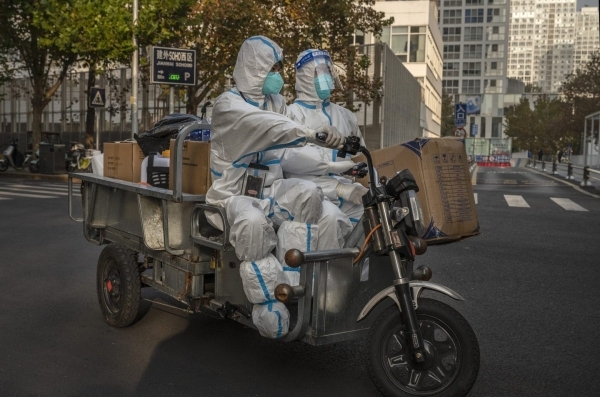
The U.S. probably won’t go through another wave of COVID cases over the winter like those seen during the two previous years, Anthony Fauci said at his final press briefing as President Joe Biden’s Chief Medical Advisor on Tuesday.
The U.S. health official, who has been celebrated for his 54 years of public service as well as vilified as the face of the country’s COVID-19 pandemic response, used the press briefing to strongly encourage Americans to get vaccines and booster shots, citing a new study that showed the latest boosters offered better protection against new variants.
“I don’t want to see anybody hospitalized, and I don’t want to see anybody die from COVID. Whether you’re a far-right Republican or a far-left Democrat, doesn’t make any difference to me,” Fauci said at the start of the conference, reflecting on his time as Chief Medical Adviser and addressing his policies on masks and vaccines that have become partisan totems in the U.S.
Caseload contrast
The press conference was periodically thrown into chaos as reporters yelled questions at Fauci about the origin of COVID-19, which became a contentious topic in the U.S. after former U.S. President Donald Trump suggested the virus originated in a laboratory in China.
Today, China, where there is much less fanfare and far fewer press conferences about COVID controls, is facing a very different winter.
COVID-19 cases in China are spiraling towards levels not seen since April 2021, and officials are looking to shut down large swaths of the country once again to prevent more cases from spreading under its zero COVID policy.
China reported 28,000 new COVID cases on Tuesday due to outbreaks in Beijing, the southern manufacturing hub of Guangzhou, and the southwestern city of Chongqing. While this is far fewer than the 42,200 cases reported in the U.S. each day by the CDC last week, analysts say the hight number of cases could put China’s zero-COVID lockdown policy in jeopardy.
Macquarie’s chief China economist Larry Hu said in a report Tuesday that “China might have already passed the point of no return, as it’s unlikely to achieve zero Covid again without another Shanghai-style hard lockdown.”
Discontent in China over COVID-19 lockdowns
China has been an outlier from the other developed countries in its continued use of lockdowns as the primary method of disease control. The country’s zero COVID policy has battered its economy for the past two years, disrupting global supply chains and threatening GDP growth.
Recent lockdowns have not only negatively impacted 20% of China’s economy in GDP terms — levels not seen since the April high of 21.2%, according to Nomura’s Chief China Economist Ting Lu — it has also incited rare protests from people demanding their freedom.
“What policymakers could do now is to slow the spread of the virus, i.e. flatten the curve, by tightening the COVID controls for the time being,” Hu advised in Macquarie’s Tuesday report. Hu said Beijing has shown signs it may be willing to reopen in the next six to nine months, but added “the road to reopening is set to involve lots of back-and-forth.”
According to Nomura estimates, around 412 million people in China are affected by lockdown measures after local officials tightened restrictions on business and social activity this month due to the rise in cases. However, the analysts note it is becoming harder to track the data as China implements COVID restrictions without public communication.
“It is becoming increasingly difficult to monitor the actual situation of China’s local lockdowns owing to the latest re-classification of risk areas from the NHC and the practice of implementing lockdowns without making any public announcements,” the report says.
Authorities in China have also implemented more frequent virus testing in cities, directed restaurants to suspend in-store dining, and told shopping malls to close. Beijing postponed its tech-focused Zhongguancun Forum, which was scheduled to begin this week.


Epidemic control workers seen wearing protective clothing to prevent the spread of COVID-19 in the Central Business District on November 23, 2022 in Beijing, ChinaKevin Frayer—Getty Images
The U.S. vs China
Anthony Fauci said last week on the Conversations on Health Care radio show that the U.S. was coming to a difficult COVID crossroad as the cold winter months approach and immune-evasive variants of Omicron emerge.
An average of 300 Americans a day are still dying of COVID-19, and federal health officials said at the press conference on Tuesday that nearly every COVID death is now preventable through vaccination and treatment.
Federal officials said they were watching the new Omicron subvariants BQ.1 and XBB. While XBB has taken a significant foothold in countries like Bangladesh and Singapore and has been called one of the most immune-evasive variants yet, BQ.1 is rapidly growing as the most dominant strain in the U.S., overtaking the BA.5 variant last week, according to the Centers for Disease Control and Prevention’s Nowcast.





